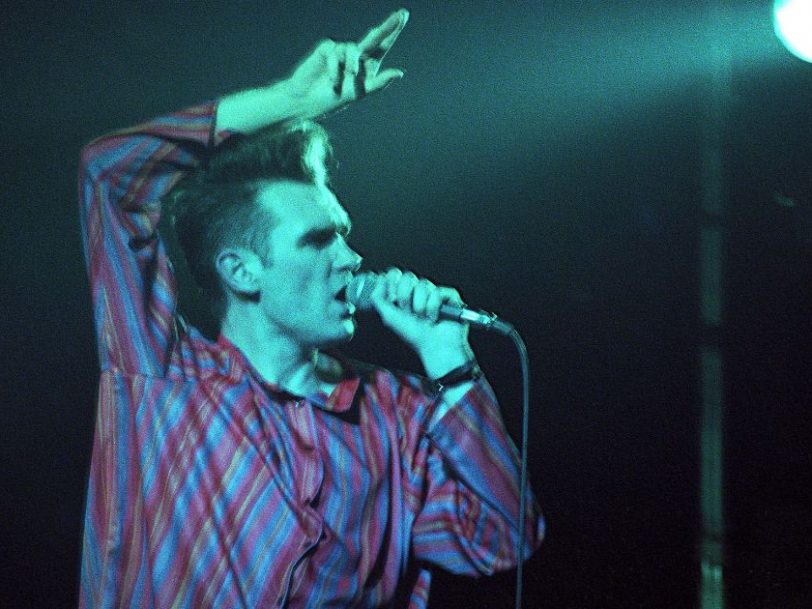It’s impossible to overstate the importance John Peel’s patronage had on furthering The Smiths’ career. The influential BBC Radio 1 DJ quickly latched onto the band, and they became an almost constant presence on his show during their five years of active service. The group regularly polled highly in Peel’s annual “Festive 50” Christmas round-up, while each of The Smiths’ Peel Sessions performances are rightly regarded as classics. This guide to all four of their appearances on John Peel’s show reveals how they either marked and/or presaged an important milestone in The Smiths’ history.
Listen to the best of The Smiths here, and check out The Smiths’ Peel Sessions history, below.
The Smiths’ Peel Session 1
Recorded: 18 May 1983
First broadcast: 1 June 1983
Repeated: 21 June 1983, 24 August 1983, 29 December 1983, 28 May 1984, 27 May 1985, 03 November 1986
Songs recorded: What Difference Does It Make?, Handsome Devil, Miserable Lie, Reel Around The Fountain
The story
John Peel’s producer John Walters brokered The Smiths’ first BBC radio session. Walters saw The Smiths play at the University Of London on 6 May 1983 – only their second-ever London gig, after debuting in the city at Covert Garden’s Rock Garden – and he was mightily impressed with their potential. Peel himself later confessed that Walters’ glowing report galvanised him into offering The Smiths’ their first Peel Session.
“I think you actually deserve some credit, because it was you that went out and heard The Smiths,” Peel told Walters during an instalment of the 1987 retrospective Peeling Back The Years. “It was one of the very few times that you’ve come back very enthusiastic about a band and said, ‘We really must get these people in at the earliest opportunity.’”
Reflecting on Morrissey’s originality as a frontman, Peel added, “I mean, he wasn’t trying to be Marc Bolan or he wasn’t trying to be [The Doors’ frontman] Jim Morrison again. And they were as Manchester bands – so many of these bands do seem to be from Manchester – just another band that arrived from nowhere with a very clear and strong identity, you know. And that is always attractive.”
Accordingly, Morrissey and co arrived at the BBC’s Maida Vale Studios to record The Smiths’ first Peel Session less than two weeks after the ULU show. And it was an absolute belter, with The Smiths laying down storming versions of three songs from their (still yet to be recorded) self-titled debut album, along with an exhilarating take of the Hand In Glove B-side, Handsome Devil. Three of the four songs performed during The Smiths’ first Peel Session (minus Miserable Lie) would later enjoy official release on the group’s 1984 compilation, Hatful Of Hollow, and all four were issued in 1988 as the standalone EP The Peel Sessions, through the Strange Fruit label.
Must hear: What Difference Does It Make?




